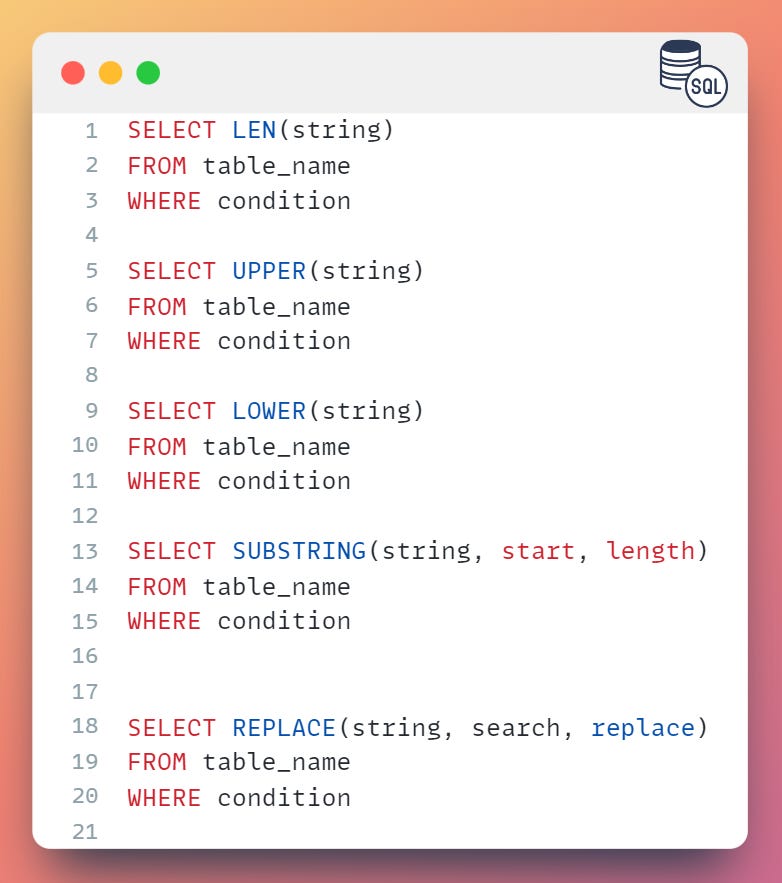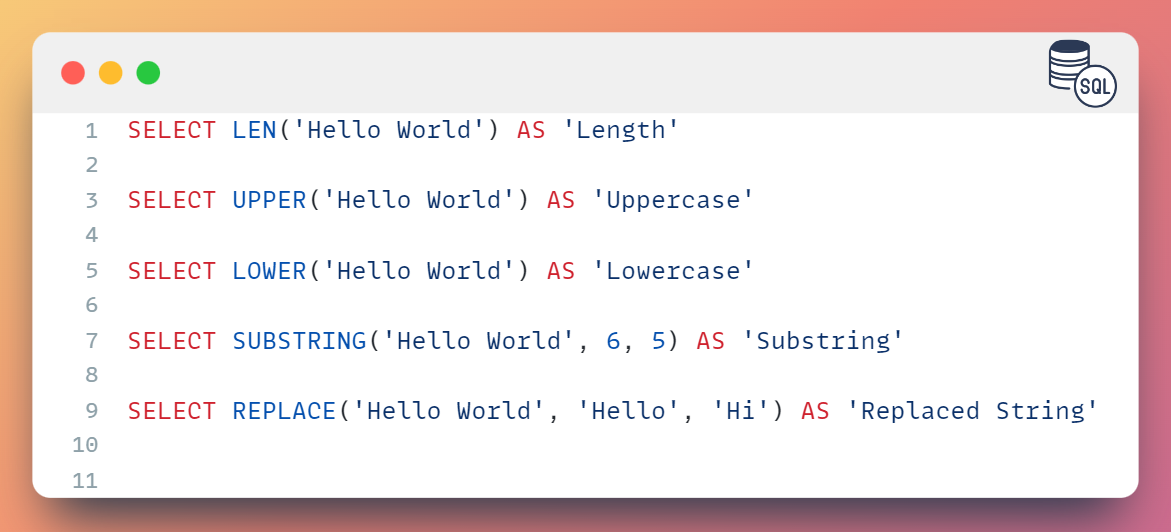Overview
SQL string functions are used to manipulate and work with string data in SQL Server. Some common string functions include:
LEN: Returns the number of characters in a string
UPPER: Converts a string to uppercase
LOWER: Converts a string to lowercase
SUBSTRING: Extracts a portion of a string
REPLACE: Replaces a portion of a string with a different string
Syntax
Here is the syntax for some common string functions in SQL Server:
Examples
Here are some examples of using string functions in SQL Server:
Advantages and Disadvantages
Advantages
String functions allow you to manipulate and manipulate string data in various ways, such as concatenating strings, extracting substrings, and searching for specific characters or patterns within a string.
String functions can be used to clean and format data, such as removing leading and trailing spaces, converting case, and stripping HTML tags.
String functions can be used to extract information from strings, such as extracting a domain name from an email address or extracting a zip code from a postal address.
Disadvantages
String functions can be resource-intensive, especially when dealing with large amounts of data.
Some string functions are not supported in all databases, which can lead to compatibility issues when writing cross-database queries.
Some string functions can be confusing or difficult to use, especially for those new to SQL.
Use Cases
Use cases for string functions in SQL:
Data cleaning and formatting: String functions can be used to remove unwanted characters, such as leading and trailing spaces, and to convert data to a standard format, such as converting all characters to uppercase or lowercase.
Data extraction: String functions can be used to extract specific information from a string, such as extracting a domain name from an email address or extracting a zip code from a postal address.
Searching and matching: String functions can be used to search for specific characters or patterns within a string, such as using the
LIKEoperator to search for a specific pattern or using theINSTRfunction to find the position of a specific character.
Best Practices
Use string functions sparingly, as they can be resource-intensive.
Avoid using string functions to perform simple operations that can be easily done using other methods, such as using the
+operator to concatenate strings.Use the appropriate function for the task at hand, as different functions have different capabilities and may be more or less efficient for different tasks.
Test your string functions thoroughly to ensure that they are working as expected and returning the desired results.
Summary
String functions are a useful tool for manipulating and extracting information from string data in SQL.
They can be used to clean and format data, search and match patterns, and extract specific information from a string.
However, it is important to use string functions sparingly, as they can be resource-intensive and may not be supported in all databases.
It is also important to follow best practices when using string functions to ensure that they are working correctly and efficiently.








